|
|
GeoAstro Applets |
Astronomy |
Chaos Game |
Java |
Miscel- laneous |
Solar Rotation Applet
|
|
You may use the keys "m", "d", "h", "n" to increase the
month, date, hour, or minute, |
 |
Select
latitude: northern positive, southern negative, select longitude: eastern positive, western negative. The regions of the Sun near its equator rotate once every 25 days. The Sun's rotation rate decreases with increasing latitude, so that its rotation rate is slowest near its poles. At its poles the Sun rotates once every 36 days! |
The
regions
of the Sun near its equator rotate once every 25 days
(synodic period). The Sun's rotation rate decreases
with increasing latitude, so that its rotation rate is
slowest near its poles. At its poles the Sun rotates
once every 36 days (synodic period).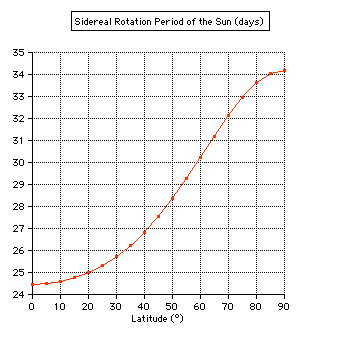 |
|

|
The Sun rotates on its axis once in about 27 days. This rotation was first detected by observing the motion of sunspots (animation). The Sun's rotation axis is tilted by about 7.25° from the axis of the Earth's orbit. |
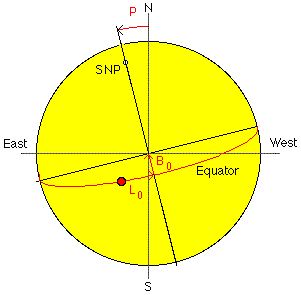 |
N, S = poles of the ecliptic SNP = Solar North Pole (from:Glossary of Solar-Terrestrial Terms) P = The position angle between the geocentric north pole and the solar rotational north pole measured eastward from geocentric north. The range in P is +/- 26.3°. B0= Heliographic latitude of the central point of the solar disk. The range of B0 is +/- 7.23°, correcting for the tilt of the ecliptic with respect to the solar equatorial plane. L0= Heliographic longitude of the central point of the solar disk. The longitude value is determined with reference to a system of fixed longitudes rotating on the sun at a rate of 13.2 °/day (the mean rate of rotation observed from central meridian transits of sunspots). The standard meridian on the sun is defined to be the meridian that passed through the ascending node of the sun's equator on 1 January 1854 at 1200 UTC and is calculated for the present day by assuming a uniform sidereal period of rotation of 25.38 days (synodic rotation period of 27.2753 days, Carrington rotation). |
|
The applet is using the algorithm from Meeus, Jean: Astronomical Algorithms |
|
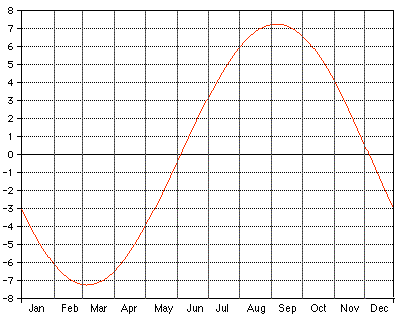
B0, the heliographic latitude of the central point of the solar disk, in 2006
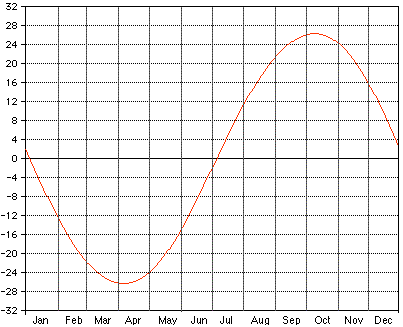
P, the position angle, in 2006
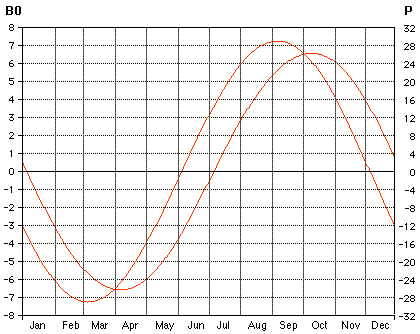
B0
and P in 2006
|
|
|
|
|
|
Mar 06 |
Apr 06 |
|
|
Sep 08 |
Oct 10 |
|
|
Dec 08 |
Jul 07 |
Extreme
values of B0 and P in 2006
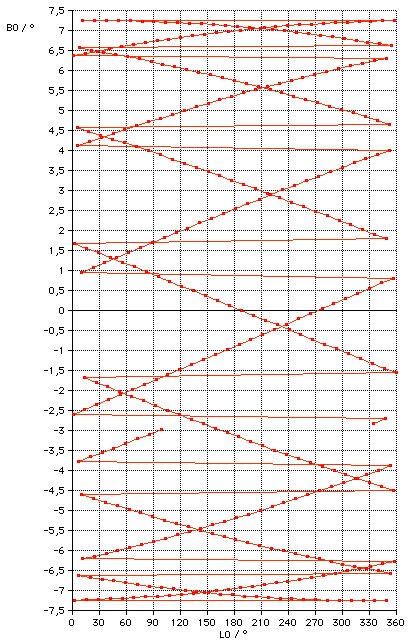
Heliographic latitude B0 vs. longitude L0 in 2007
2007 Solar ephemerids and parameters
(Carrington rotation, B0, L0, P)
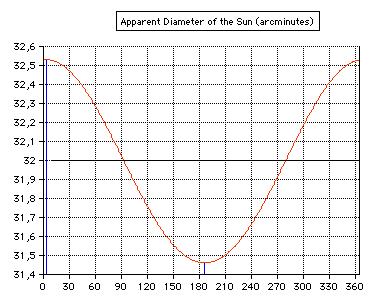
| Date |
Distance/AU |
Diameter/' |
| Jan 2 to
5 Perihelion |
0.983260 |
32.53 +1.7 % |
| ~Oct 5, ~Apr 3 Mean |
1 | 31.98 +/- 0 % |
| Jul 3 to
7 Aphelion |
1.01671 | 31.45 -1.7 % |
![]() Perihelion
and Aphelion Sun Comparison
Perihelion
and Aphelion Sun Comparison
Applet: Limb Darkening of the
Sun
Updated:
2023, Oct 07